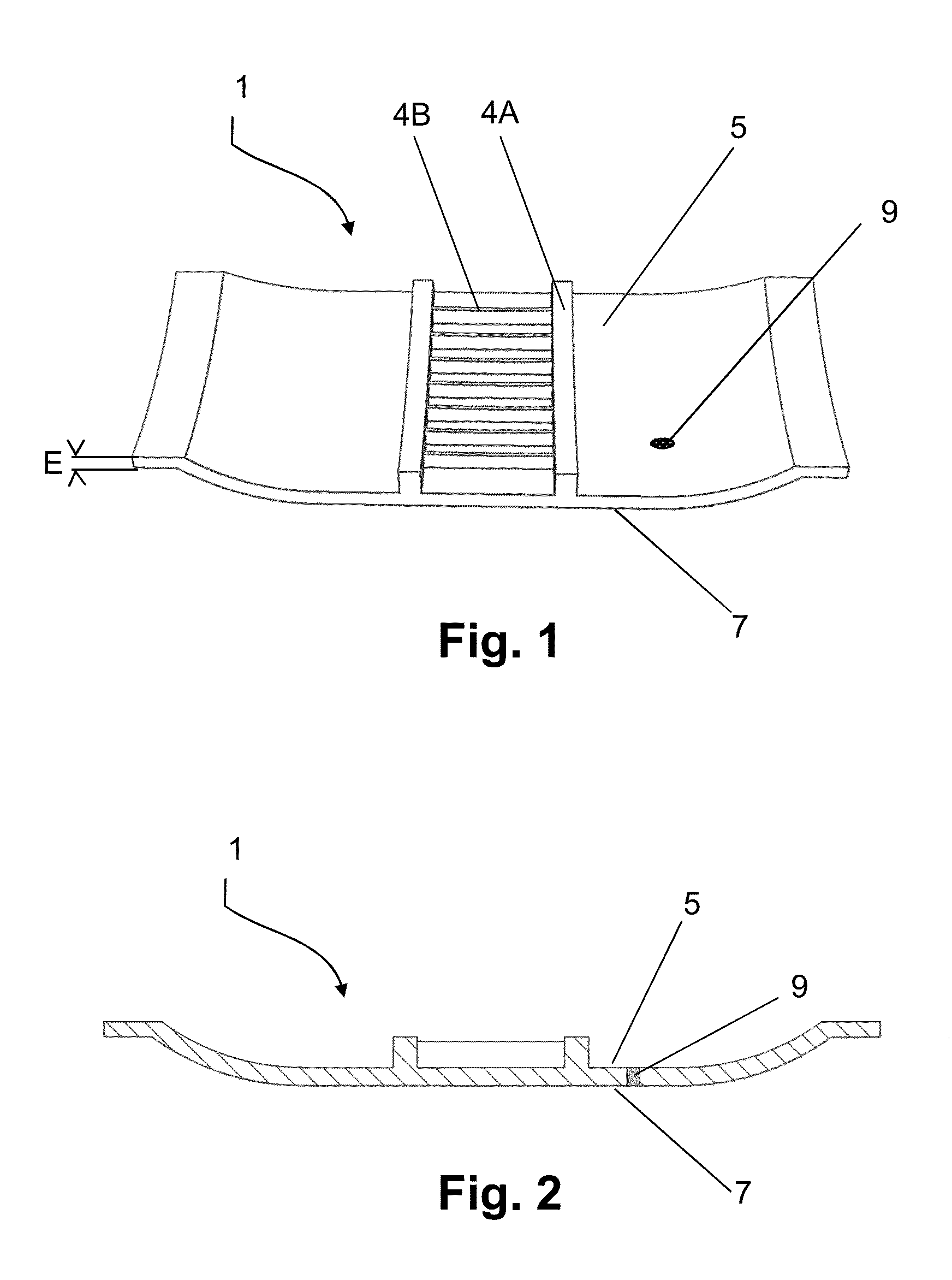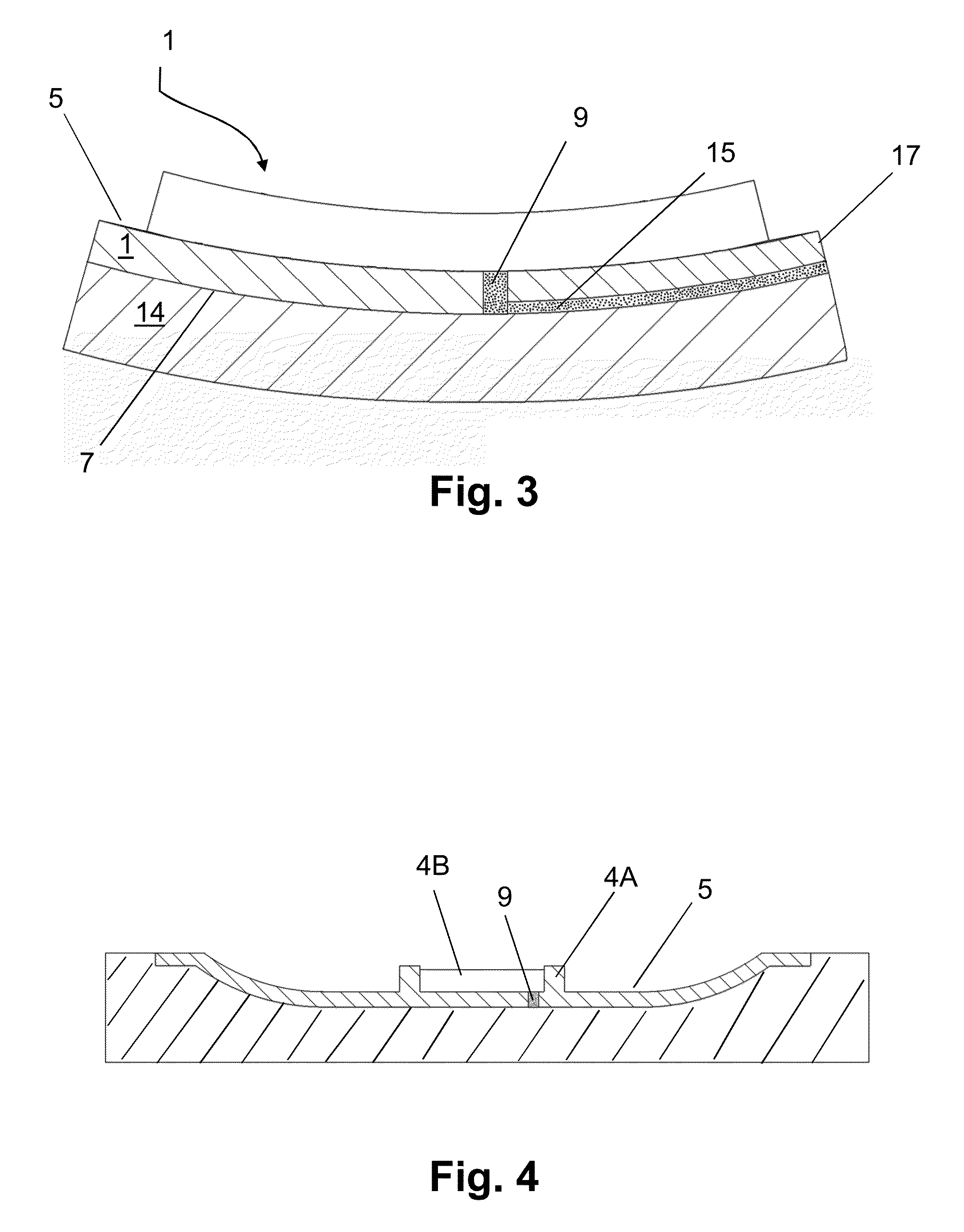Molding element for a tire mold comprising a porous area
a technology of molding element and porous area, which is applied in the field of molding element, can solve the problems of reducing material density, affecting the quality of molds,
- Summary
- Abstract
- Description
- Claims
- Application Information
AI Technical Summary
Benefits of technology
Problems solved by technology
Method used
Image
Examples
second embodiment
[0041]FIG. 3 is a view in cross section of the molding element 1 of FIG. 1 in a plane perpendicular to the plane of FIG. 2. The molding element 1 is depicted here as being an element attached to another part 14 of the mold. More specifically, in this embodiment, the molding element 1 comprises a second porous area 15. This second porous area 15 here forms part of the second surface 7 of the molding element 1. More particularly, this porous area 15 connects the cavity 9 to a lateral surface 17 of this molding element 1. The lateral surface 17 is the surface of the element 1 that connects the first surface 5 to the second surface 7. In this way, air is removed from the mold via the first porous area 9 and the second porous area 15 and this is done without the need to make a hole in the other part 14 of the mold.
third embodiment
[0042]FIG. 4 depicts a third embodiment in which the first area 9 opens out at the intersection of two protrusions 4A, 4B. The removal of air from the vicinity of the protrusions when the mold is closed over the green tire is thus improved.
[0043]FIG. 5 shows one step in a method of the layer-by-layer manufacture of the molding element of FIG. 1. This method comprises a plurality of steps of depositing layers 19 of metallic particles and of agglomerating all or some of the particles of these layers by fusion using a laser 20. For each of the layers of the molding element, a porous part 21 is created during the step of agglomerating the particles. The porous parts of the various layers are superposed with one another to form a continuous porous zone extending into the thickness of the molding element. These porous parts may be superposed with one another exactly in the thickness of the molding element as is depicted in FIG. 5. As an alternative, there may be an offset between the poro...
PUM
| Property | Measurement | Unit |
|---|---|---|
| thickness | aaaaa | aaaaa |
| thickness | aaaaa | aaaaa |
| diameter | aaaaa | aaaaa |
Abstract
Description
Claims
Application Information
 Login to View More
Login to View More - R&D
- Intellectual Property
- Life Sciences
- Materials
- Tech Scout
- Unparalleled Data Quality
- Higher Quality Content
- 60% Fewer Hallucinations
Browse by: Latest US Patents, China's latest patents, Technical Efficacy Thesaurus, Application Domain, Technology Topic, Popular Technical Reports.
© 2025 PatSnap. All rights reserved.Legal|Privacy policy|Modern Slavery Act Transparency Statement|Sitemap|About US| Contact US: help@patsnap.com



